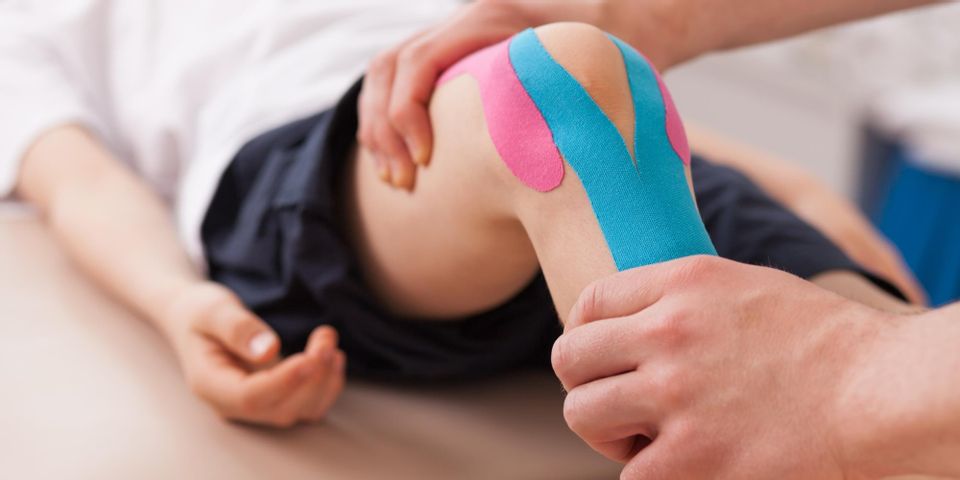A Guide to Kinesiology Taping & Physical Therapy

Introduced to the medical world in the 1970s, kinesiology taping is a fairly recent addition to the world of physical therapy. The original practitioner, Dr. Kenso Kase, developed the tape to act as a more effective method of treating injuries on a physiological level that regular athletic tapes couldn’t achieve. Here’s a closer look at how this method helps rehabilitate injuries without restricting mobility.
Understanding Kinesiology Taping in Physical Therapy
What Is Kinesiology Tape?
There are many different kinds of kinesiology tapes designed for injury rehabilitation. The tape can be used for a variety of circumstances, including changing muscle tone and reduced swelling. More flexible than regular athletic tape, it can be worn for longer periods and is proven to reeducate the neuromuscular system and improve circulation.
Stuck to the skin in variations of I, X, and Y formations, the flexible tape is used by a variety of athletes because of its mobility and joint support, making it ideal for rehabilitation and injury prevention.
What Are the Benefits?
 The method is appropriate for people of all ages and can be combined with other treatments during rehabilitation. Unlike athletic tape that limits motion and decreases circulation, kinesiology tape inhibits pain by pulling on the skin and relieving the pressure between muscle and skin. This separation prevents input to pain receptors in the brain to decrease discomfort and muscle spasms.
The method is appropriate for people of all ages and can be combined with other treatments during rehabilitation. Unlike athletic tape that limits motion and decreases circulation, kinesiology tape inhibits pain by pulling on the skin and relieving the pressure between muscle and skin. This separation prevents input to pain receptors in the brain to decrease discomfort and muscle spasms.
Is It Right for You?
Kinesiology tape can be worn for longer periods than other types, making it a cost-effective method of treatment. The proficient material is not only used by professional athletes, but physical therapists and occupational therapists also prescribe the method for thousands of everyday people. Ask your physical therapist if this healing method will help in your treatment.
Looking for a skilled and compassionate physical therapist? Visit the experts at Hands-On Health Massage & Physical Therapy in High Point, NC. With over 20 years of physical therapy and massage therapy experience, these specialists can help reduce spasms and cramping through combinations of stress management, trigger point therapy, deep tissue massage, and kinesiology taping. Explore their services on their website or call for an appointment at (336) 906-2040.
About the Business
Have a question? Ask the experts!
Send your question

